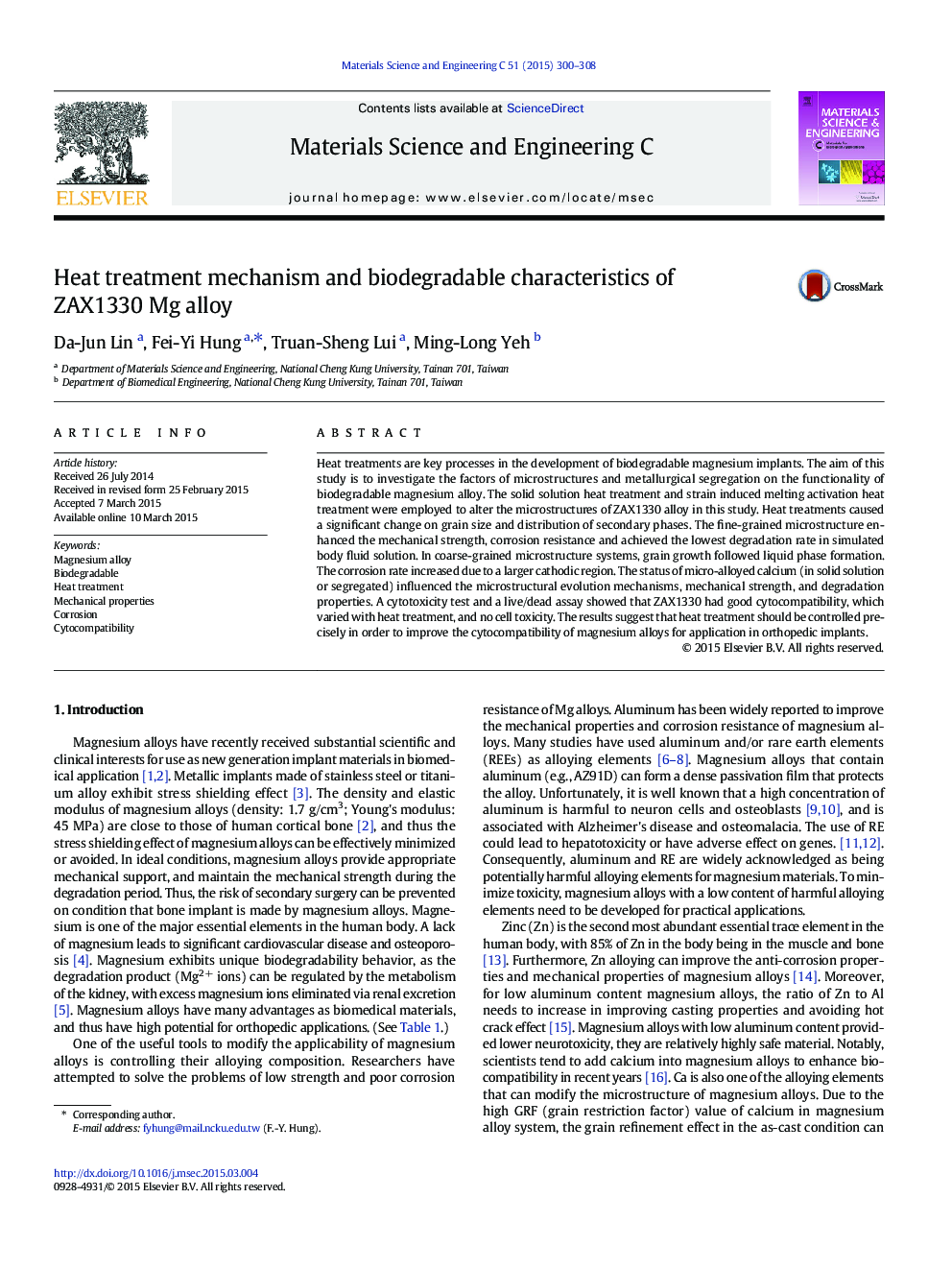| Article ID | Journal | Published Year | Pages | File Type |
|---|---|---|---|---|
| 7869705 | Materials Science and Engineering: C | 2015 | 9 Pages |
Abstract
Heat treatments are key processes in the development of biodegradable magnesium implants. The aim of this study is to investigate the factors of microstructures and metallurgical segregation on the functionality of biodegradable magnesium alloy. The solid solution heat treatment and strain induced melting activation heat treatment were employed to alter the microstructures of ZAX1330 alloy in this study. Heat treatments caused a significant change on grain size and distribution of secondary phases. The fine-grained microstructure enhanced the mechanical strength, corrosion resistance and achieved the lowest degradation rate in simulated body fluid solution. In coarse-grained microstructure systems, grain growth followed liquid phase formation. The corrosion rate increased due to a larger cathodic region. The status of micro-alloyed calcium (in solid solution or segregated) influenced the microstructural evolution mechanisms, mechanical strength, and degradation properties. A cytotoxicity test and a live/dead assay showed that ZAX1330 had good cytocompatibility, which varied with heat treatment, and no cell toxicity. The results suggest that heat treatment should be controlled precisely in order to improve the cytocompatibility of magnesium alloys for application in orthopedic implants.
Related Topics
Physical Sciences and Engineering
Materials Science
Biomaterials
Authors
Da-Jun Lin, Fei-Yi Hung, Truan-Sheng Lui, Ming-Long Yeh,
